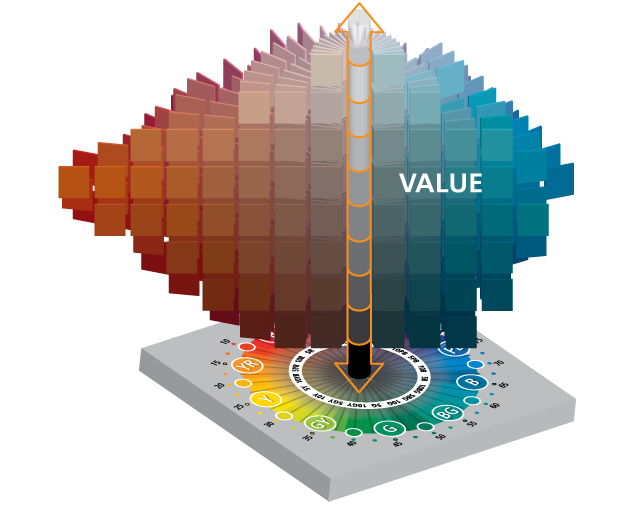The Munsell colour system, popularly known in Australia as the Munsell colour chart, is a scientific method of numerically designating colours based on their colour schemes. Internationally, it is also known as the Munsell scale. The system follows a colour arrangement schematic defined by the hue, chroma, and value measuring scale, respectively.
What each of them means is specified below:
- Hue: Hue is the specified name of the colour as per international standards. Common hues include red, green, blue, along with other standard appropriately understood colours.
- Chroma: Chroma designates how saturated a colour is and is the “colourfulness” of a particular hue.
- Value: It is the scale that represents how dark or how light the colour is. On the Munsell scale, there are about 11 values.
Munsell Scale: A Brief History
The Munsell colour chart was invented by Albert H. Munsell in the 1800s, a prominent American artist and a painter with a keen eye for science. His work was sorely based on the fact that there wasn’t a proper colour scheme that artists could use to communicate colour correctly. Similar to the musical notes artists use, the Munsell system uses a series of hue, value and chroma to assign a numeric value to that particular colour. In this way, a colour can be effectively communicated to the artists or the person in the same way a musician uses notes, pitch and duration to teach musical melodies.
Munsell’s publication, the Atlas of the Munsell Colour System, was released in 1913 and marked the introduction of the colour system to the general public. The publication introduced 15 colour charts that used hue, value, and chroma to numerically and accurately classify colours. After he died in 1918, his company, the Munsell Colour Company Inc, continued his work and sired more publications and representations of the colour system in the years that came.
How To Correctly Read The Munsell Colour Chart?
The characteristics of the chart, namely the hue, the value and the chroma, need to be properly understood first as these are the basis for the colour classifications.
Hue comprises all the colours, and in the Munsell system, they are given alphabetical codes to represent them (Yellow: Y, Green-Yellow: GY). The value of the colour is the degree of how light or how dark the colour is and is represented numerically on a scale that runs vertically, with the lower number being the darkest.
The chroma indicates the strength or saturation of the colour. It is represented on a scale that runs horizontally in the ascending order if taken from left to right, left being the weakest and right being the strongest. Once these three attributes are adequately learned, it will be easier to recognise them on a Munsell colour chart.
Munsell Colour System: Applications In The Modern World
- Modern artists use the colour system to represent the type of colours they use in paintings accurately.
- Soils scientists use it to determine the colour of the soil particles and analyse them for their utility.
- Graphic designers also use the colour system to create the correct colour scheme for the models specified by their clients.
- Interior designers use the Munsell colour scheme to make sure the room’s colours don’t clash and instead blend perfectly with one another.
- Archaeologists use it to detect evidence of human activity in historical dig sites and caves.
- Food scientists use colours to analyse the quality of food items and perishables.



